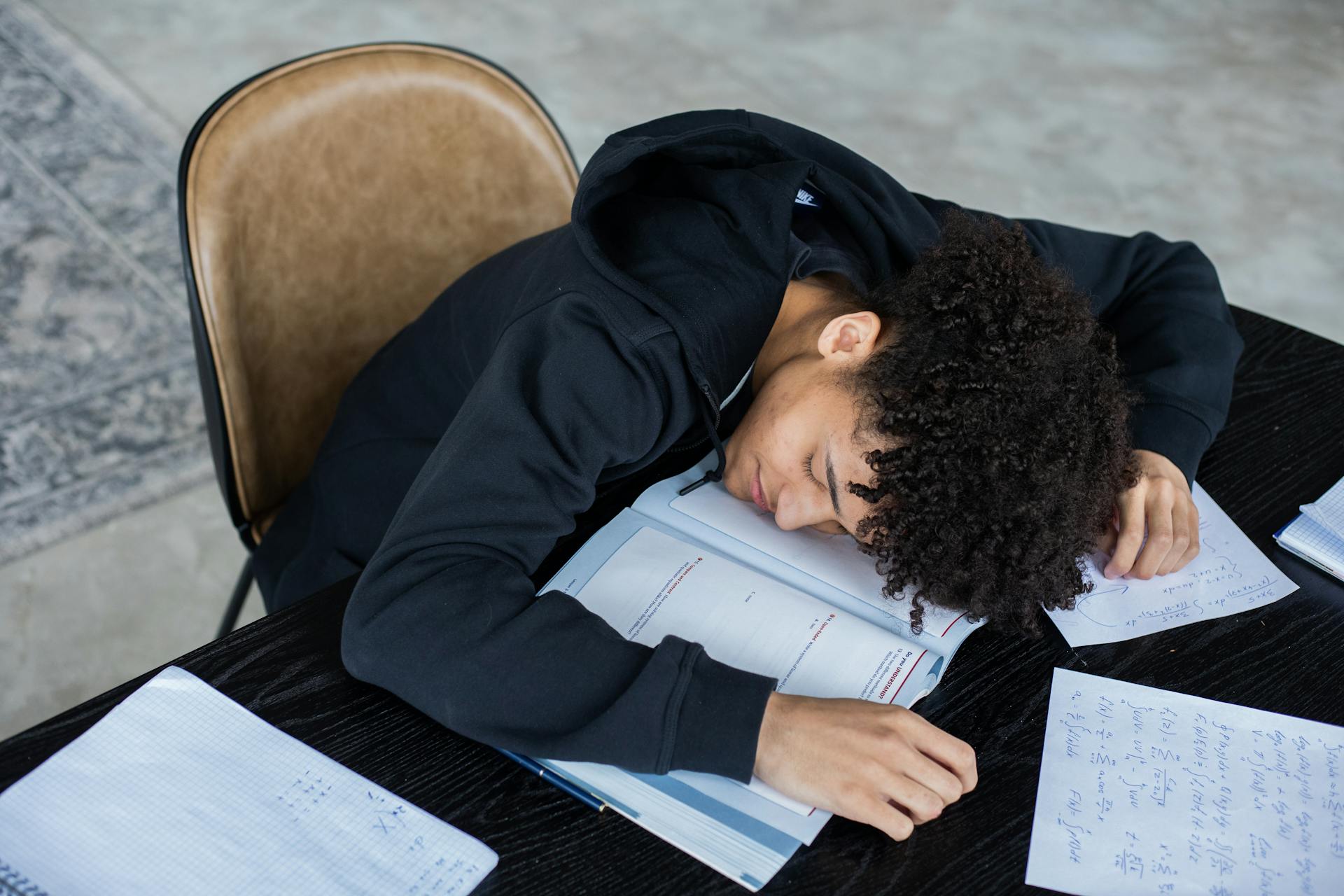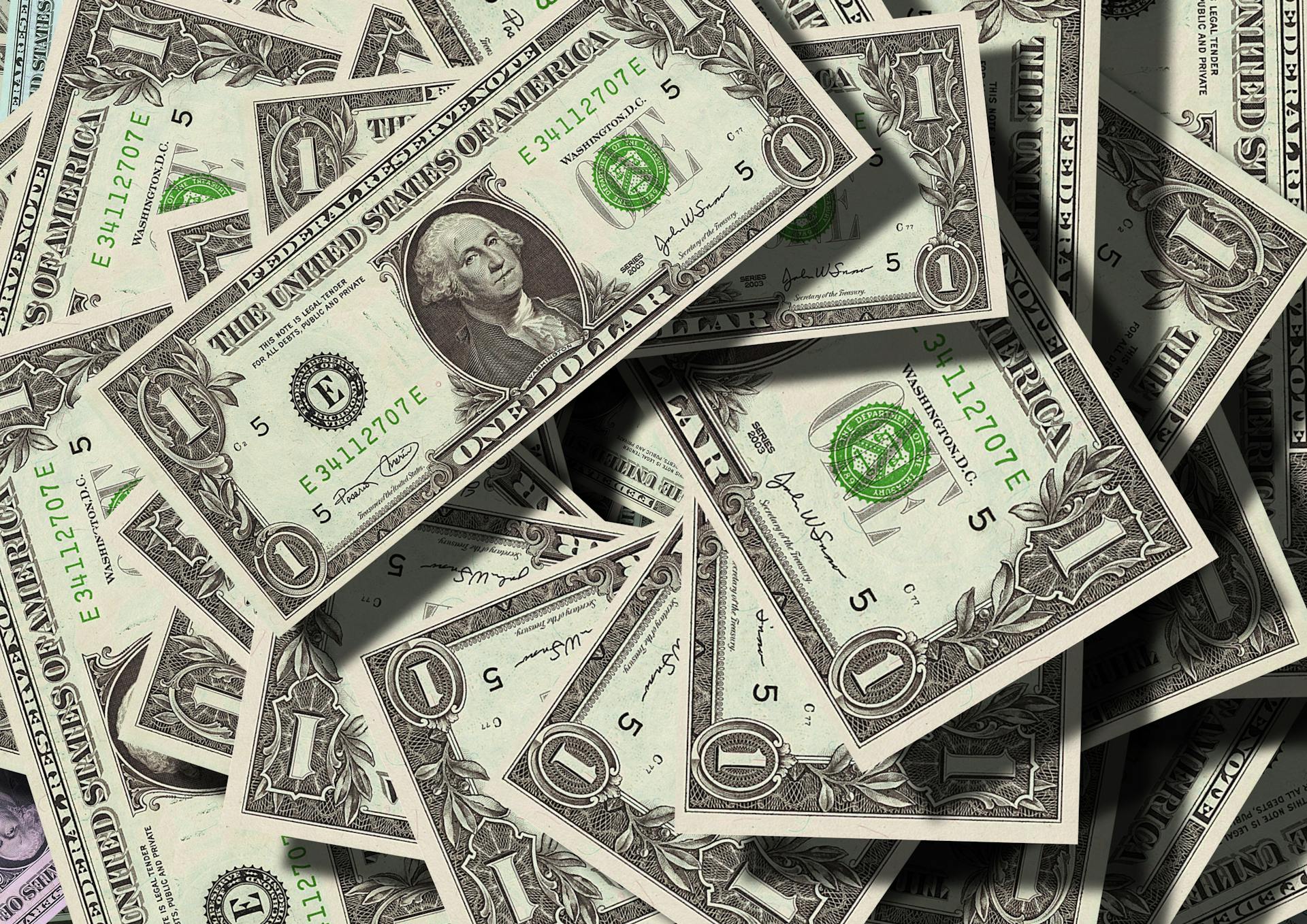
If you're a student, you might be eligible for a subsidized loan with federal assistance. To qualify, you must be enrolled at least half-time in an eligible program at a participating school.
The U.S. Department of Education is the primary issuer of these loans, and they're a great option for students who need financial assistance to cover education expenses.
To be considered for a subsidized loan, you must demonstrate financial need, as determined by the Free Application for Federal Student Aid (FAFSA).
Explore further: Housing Loan Assistance
Eligibility Requirements
To be eligible for a subsidized loan, you must be an undergraduate student with demonstrated financial need.
You must have received a high school diploma or the equivalent, such as a GED, to be eligible for a subsidized loan.
To qualify for a subsidized loan, you must be a U.S. citizen, national, or eligible non-citizen.
You must not be in default on any existing federal student loans to be eligible for a subsidized loan.
Take a look at this: Class B Share
Here are the specific requirements to meet:
You must meet these requirements to be eligible for a subsidized loan, and it's essential to review the specific details to ensure you qualify.
Application Process
To apply for a subsidized loan, you need to start by filing the Free Application for Federal Student Aid (FAFSA), which can be done at any time during the year. You can choose between a paper application or an electronic one, depending on your school's preference.
It's essential to plan ahead and ask your school about their preferred application method and processing time, as this can take several weeks. If a need analysis has already been done for you, you might be able to arrange a loan in two to four weeks, but if not, it could take several months.
You should also check if you're eligible for a Federal Pell Grant, as this is required before your school can process the loan application and disburse loan funds. Be sure to understand the loan repayment terms, including the interest rate and repayment period.
Related reading: What Do I Need to Get a Payday Loan
Here are the steps to follow:
- Complete the FAFSA or Renewal FAFSA (for returning students) at StudentAid.gov.
- Receive a financial aid award letter by mail or email from your school's financial aid office.
- Contact your school's financial aid office to accept the financial aid and including student loans.
- Sign any associated paperwork, such as the Master Promissory Note (MPN).
The interest rate on the Federal Direct Subsidized Stafford Loan varies depending on when you took out the loan, with a fixed rate of 3.4 percent for undergraduate students who took out the loan between July 1, 2012, and June 30, 2013. A fee of 1 percent is deducted from each disbursement.
You can also refer to the following table to understand the loan processing timeline:
Loan Details
A subsidized loan can be a huge relief for those in financial need. It's a type of loan where the government pays the interest while you're in school.
The loan amount can vary, but typically ranges from $5,500 to $12,500 per year for undergraduate students.
Readers also liked: Do Medical Bills under 500 Affect Your Credit
Stafford
The Stafford loan is a type of federal loan made by the U.S. Department of Education to students attending participating schools. The main difference between subsidized and unsubsidized Stafford Loans is that the subsidized Stafford is available only to those who can demonstrate financial need.
Readers also liked: Stafford Subsidized Loan Forgiveness
Subsidized Stafford Loans have the government paying the interest while the student is enrolled at least half-time. The interest rates on Direct Subsidized Loans are fixed and do not change over the life of the loan, currently at 6.53% for undergraduate students.
You can call (800) 848-0979 or visit https://studentaid.gov/ for more information on Direct Subsidized Stafford Loans. The current fee on Direct Subsidized Loans is 1.057% for loans borrowed through Sept. 30, 2025, and is deducted from each loan disbursement.
Here are the periods when the federal government pays the interest on Direct Subsidized Loans:
- While you are enrolled in school at least half-time
- During the 6-month grace period after you leave school
- During periods of authorized deferment
You can ask the college financial aid office to increase the loan amount to cover the fees, up to the annual loan limit.
How Much Money?
If you're wondering how much money you can borrow for your education, the amount depends on whether you're a dependent or independent student. Dependent students can borrow up to $31,000 in aggregate, with a maximum annual limit of $5,500 for juniors and seniors.
If this caught your attention, see: How Soon Can You Borrow against a Life Insurance Policy
For independent students, the picture is a bit different. They can borrow up to $57,500 in aggregate, with a maximum annual limit of $7,000 for juniors and seniors.
Here's a breakdown of the maximum annual federal Stafford loan limits for both dependent and independent students:
Graduate and professional students can borrow even more, up to $138,500 in aggregate, with a maximum annual limit of $12,000 for additional unsubsidized loans.
Funding and Limits
The annual and aggregate limits set for Direct Subsidized Loans cannot typically be adjusted, but speaking with your school's financial aid administrator could potentially lead to an increase in your Subsidized Loan award.
If you're a dependent undergraduate, the maximum Subsidized Loan award is $3,500 for the first year, increasing to $4,500 for the second year, and $5,500 for the third, fourth, and fifth years.
Here are the annual and aggregate limits for Direct Subsidized Loans:
The aggregate (lifetime) limits for Direct Subsidized Loans are also worth noting: $23,000 for dependent undergraduates, $57,500 for independent undergraduates, and $138,500 for graduate students.
Limits:
Limits are a crucial aspect of the Direct Subsidized Loan program. The annual limits for independent students vary by grade level, with freshmen earning up to $9,500, sophomores earning up to $10,500, juniors and seniors earning up to $12,500, and graduate students earning up to $20,500.
The annual limits for dependent students also vary by year, with first-year students earning up to $5,500, second-year students earning up to $6,500, and third- to fifth-year students earning up to $7,500.
Aggregate limits, on the other hand, refer to the maximum amount a student can borrow over their lifetime. For dependent undergraduates, the aggregate limit is $31,000, including $23,000 in subsidized and $8,000 in unsubsidized loans. Independent undergraduates have a higher aggregate limit of $57,500, with $23,000 in subsidized and $34,500 in unsubsidized loans.
Here's a summary of the aggregate limits for different student types:
It's worth noting that annual and aggregate loan limits are the same for dependent and independent students. However, graduate students have a higher aggregate limit of $138,500, which includes all undergraduate and graduate loans.
For more insights, see: Best Credit Cards for Students with No Credit
Funds Are Distributed
Before your loan funds are sent to your school, you'll need to attend entrance counseling, which can be done online or in-person. This session will cover the loan terms, conditions, and requirements.
You'll also be required to sign a Master Promissory Note (MPN) before the loans can be disbursed. This is a standard requirement for all Direct Loans borrowers.
In most cases, the loan will be sent in at least two installments. There's typically a 30-day delay in disbursing student loans to first-time, first-year borrowers.
Loan funds are credited to your account in a specific order:
- Tuition and fees
- Room and board (if you're living in college-owned student housing)
- Other school charges (with your permission)
If there are any funds remaining in your loan account, you'll receive a credit balance refund. This refund can be issued via check, cash, debit card, or electronic funds transfer (EFT) to your bank account.
Take a look at this: Fast Cash Advance Tax Refund
Government Involvement
The federal government plays a significant role in subsidized loans, making it possible for students to focus on their education without the burden of interest payments.
The U.S. Department of Education is the lender for federal Stafford Subsidized and Unsubsidized Loans. This means that the government is responsible for making these loans available to students attending participating schools across the country.
The main difference between subsidized and unsubsidized Stafford Loans is that the subsidized Stafford is available only to those who can demonstrate financial need, and the interest is paid by the government while the student attends school at least half time.
The federal government pays the interest on Direct Subsidized Loans during three specific periods: while you are enrolled in school at least half-time, during the 6-month grace period after you leave school, and during periods of authorized deferment.
Here are the periods during which the federal government pays the interest on Direct Subsidized Loans:
- While you are enrolled in school at least half-time
- During the 6-month grace period after you leave school
- During periods of authorized deferment
The federal government does not pay the interest during periods of forbearance.
Frequently Asked Questions
Are subsidized loans hard to get?
Eligibility for subsidized loans depends on financial need, which is determined by the FAFSA application. If you're eligible, you may be able to receive a subsidized loan to help fund your education.
How fast can you get a subsidized loan?
Getting a federal student loan typically takes a few weeks to a few months to process, starting from the time you submit your FAFSA application online. The timeline may vary depending on the complexity of your application and the speed of the processing.
How do I receive my subsidized loan?
Your Direct Subsidized Loan funds will be applied directly to your school account to cover tuition, fees, and other charges. Any remaining funds will be refunded to you
Sources
- https://www.ohe.state.mn.us/mPg.cfm
- https://www.edvisors.com/student-loans/federal-student-loans/subsidized/
- https://www.towson.edu/admissions/financialaid/programs/loans/subunsub.html
- https://financialaid.nd.edu/aid-types/loans/federal-direct-subsidized-unsubsidized-loan/
- https://fas.ucsd.edu/types/loans/federal-undergraduate-loans.html
Featured Images: pexels.com


